The AMD B550 Motherboard Overview: ASUS, GIGABYTE, MSI, ASRock, and Others
by Dr. Ian Cutress & Gavin Bonshor on June 16, 2020 11:00 AM EST
AMD’s budget motherboard range is often at times more successful than the bigger, full fat versions. Users have in the past got almost all of the same chipset features on these motherboards than they did on the X-series range. That changes with the new B500 series as consumers no longer have PCIe 4.0 on the chipset, instead reverting back to PCIe 3.0. This ultimately should not be an issue, as budget builds are unlikely to have multiple PCIe 4.0 add-in drives, for example. Nonetheless, the high vocal demand for B550 motherboards, especially after AMD launched Ryzen 3, has not gone unnoticed, and there are over 40 new models in the market, most of which should be on sale from today.
B is for Budget, Right?
One of the main complaints about the AMD X570 motherboard line was the wide variation in pricing. As we reported in our X570 motherboard overview, covering over 35 motherboards, the variation in cost from the cheapest to the most expensive was quite eye-watering.
The AMD X570 Motherboard Overview: Over 35+ Motherboards Analyzed
On the high end, we had the limited edition ASRock’s X570 Aqua, a board we went on to review and call a stunning collectors piece, but it was priced at $1000.
On the low-end, we saw a few motherboards go just under $200:
- ASUS Prime X570-P ($170),
- ASUS TUF Gaming X570-Plus ($190),
- ASRock X570 Phantom Gaming 4 ($155),
- ASRock X570 Pro4 ($170),
- ASRock X570M Pro4 ($186),
- Gigabyte X570 Gaming X ($170),
- MSI X570 Gaming Plus ($170), and
- MSI X570-A Pro ($160)
In previous years, this price range used to be the infamous battleground where top-end chipsets would battle it out in the mid-range, not be the entry point into a market. However, X570 did bring a number of new benefits, such as PCIe 4.0 from the processor, PCIe 4.0 from the chipset, and an increased bandwidth to and from the chipset.
So for AMD’s more budget-oriented focused line of motherboards, we should expect to see designs more friendly to those cost-sensitive builds, and for users that don’t need oodles of PCIe 4.0, right? In previous years, we have seen the budget line of motherboards come down as low as $65, which when using a $99 processor, is probably the correct inflection point.
For our overview today, the cheapest motherboard we were told pricing about in advance seems to be $115. That’s about $50 too much on the low end.
But the most expensive motherboard is $280. That price, without any context, sounds insane. For that price the user might as well pick up an X570 motherboard, right? It would seem that the GIGABYTE B550 Aorus Master has to offer something special in order to justify that amount of money. Fortunately, this component is a unique motherboard among B550 and well worth reading up on.
Chipset Differences
One of the key ways for AMD to help reduce the cost of its budget boards is to reduce the amount of features on the chipset compared to the X570 models. The easiest way to do this is to remove PCIe 4.0 from the chipset, pushing it back to PCIe 3.0: the processor still offers PCIe 4.0 use, but anything powered by the chipset will be limited to PCIe 3.0. This has the added benefit of reducing the power consumption of the chipset down to 5 W, rather than 10 W, which means that none of the B550 motherboards come with a chipset fan as standard.
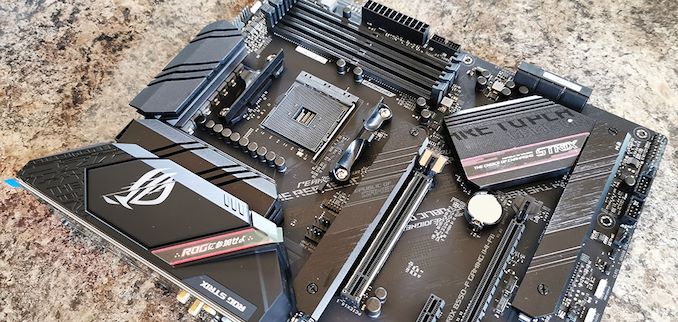
ASUS ROG Strix B550F-Gaming Wi-Fi
The cheaper chipset often doesn’t come with SLI certification by standard, whereas X570 does. This means there was no SLI licence fee to pay, unless the motherboard manufacturer goes out of its way to certify it board-to-board. Given that this is the budget board, and how limited multi-GPU setups are beyond compute workloads in recent years, the pickup of such a feature was likely to be limited on B550 anyway.
Another side effect of trying to reduce costs is a reduced IO support. AMD allows for a number of configurations with B550:
- CPU
- x4 PCIe 4.0 NVMe
- x2 PCIe 4.0 NVMe + 2 x SATA
- x2 PCIe 4.0 NVMe + x2 PCIe 4.0 NVMe
- Chipset
- 4 SATA + 4x PCIe 3.0
- 4 SATA + 2x PCIe 3.0 + 2 SATA
With a peak configuration, without bifurcating the main CPU lanes, motherboards can offer two or three NVMe drives, or up to eight SATA ports. The odd motherboard out in the stack is the Gigabyte B550 Aorus Master, which we will explain when we get to that motherboard [link].
AMD’s own slide on the matter looks like this:
Overall, the B550 chipset seems like a minor upgrade over B450, with eSATA support removed and support for more SATA ports. The 5W TDP is the same as B450, suggesting that B550 is still an ASMedia design but updated.
Processor Support
Another question of B550 is one of processor support. At the announcement of B550, AMD stated that these motherboards would only support the latest Ryzen 3000 processors and newer, essentially limiting B550 to Zen2-based processors at a minimum, and support for future generations of Ryzen, which we believe to cover Zen 2 APUs and Zen 3 hardware next year. Most of the B550 motherboard line has video outputs, and does not support Zen+ APUs, which essentially confirms Zen2 APU support.
| AMD AM4 Motherboard Support | ||||||
| AnandTech | uArch | A320 | B350 X370 |
B450 X470 |
X570 | B550 A520 |
| Ryzen 4000 CPU | Zen 3 | X | X | Beta | ✓ | ✓ |
| Ryzen 4000 APU** | Zen 2 | X | ?Beta | ? ✓ | ? ✓ | ? ✓ |
| Ryzen 3000 CPU | Zen 2 | X | Beta | ✓ | ✓ | ✓ |
| Ryzen 3000 APU | Zen+ | ✓ | ✓ | ✓ | ✓ | X |
| Ryzen 2000 CPU | Zen+ | ✓ | ✓ | ✓ | ✓ | X |
| Ryzen 2000 APU | Zen | ✓ | ✓ | ✓ | X | X |
| Ryzen 1000 CPU | Zen | ✓ | ✓ | ✓ | X | X |
| Athlon A-Series | * | ✓ | X | ✓ | X | X |
| Ryzen Pro CPUs follow their non-Pro equivalents * Excavator or Carrizo ** Unknown - product not announced yet |
||||||
Currently AMD’s Zen 2 processors start at $99 with the Ryzen 3 3100, offering four cores with simultaneous multithreading. You can read our review here.
The AMD Ryzen 3 3300X and 3100 CPU Review: A Budget Gaming Bonanza
Exactly where AMD’s Zen 2 APU line of products will fall on the price spectrum is unclear, however based on previous generations we are likely to see a design using half-cores and almost half-graphics, which puts a hypothetical Ryzen 3 APU at 4 cores and 3 or 4 compute units. If this is the case, then this APU is likely to be more expensive than the Ryzen 3 3100.
Motherboards to Watch Out For
As with any processor generation, there are a few motherboards to keep an eye on. Some are interesting in their own right, based on how the motherboard is wired and configured, whereas others offer visual incentives or seem to come in at a really good price.
GIGABYTE B550 Vision D
On the face of it, this motherboard looks like a rebranded Designare motherboard, but uniquely among our B550 options, it is the only one with a Thunderbolt 3 controller onboard.
It is also the only one with dual gigabit Ethernet and Wi-Fi 6, and also one of very few with two PCIe 4.0 slots from the processor. It’s rather pricy as a result, at $260.
GIGABYTE B550 Aorus Master
The Aorus Master should be getting all the headlines for interesting B550 configuration. In order to support three full PCIe 4.0 x4 slots on the board, GIGABYTE split the CPU lanes into x8/x4/x4, and pushed the last two for storage. This is on top of the PCIe 4.0 x4 that already comes from the CPU. As a result, the main PCIe 4.0 slot is only x8 when those M.2 slots are occupied, but that’s the tradeoff.
There is also four USB 3.2 Gen 2 Type-A ports on the rear, the most of any motherboard, and this board is the only one to offer Dual BIOS. Price is $280.
ASRock B550 Extreme4
I picked the B550 Extreme 4 out of the set for two main reasons. Firstly, the price is more indicative of a B550 motherboard, around $185. The other segment is that ASRock seems to be taking the Extreme line of motherboards in a different design philosophy. It’s quite interesting to look at.
The focus is more on blue, with a slight RGB twinge to purple, but ASRock has gone as far to include the blue on the PCB itself, making an interesting design.
GIGABYTE B550 UD3H
At the cheapest end of the B550 spectrum, what should you expect? Limited SATA ports, bad connectivity? The B550-UD3H is the only motherboard under Gigabyte’s eponymous Ultra Durable line, but as the $95, this one comes with the bare essentials for a Zen 2 platform: a PCIe 4.0 x4 M.2 slot, Realtek’s Gaming 8118 Dragon gigabit Ethernet, a base ALC887 audio codec, with DVI-D and HDMI video outputs.
Currently some of the cheapest B350 and B450 motherboards are Gigabyte UD models, so it will be interesting to see if this one comes down in price over time nearer that $70 mark.
Motherboards Covered in This Overview
For quick links to each of the pages:
ASRock
- ASRock B550 Taichi
- ASRock B550 Steel Legend
- ASRock B550M Steel Legend
- ASRock B550 PG Velocitá
- ASRock B550 Phantom Gaming 4
- ASRock B550 Phantom Gaming 4ac
- ASRock B550 Phantom Gaming-ITX/ax
- ASRock B550 Extreme4 *HIGHLIGHTED*
- ASRock B550 Pro4
- ASRock B550M Pro 4
- ASRock B550M-HDV
- ASRock B550M-ITX/ac
ASUS
- ASUS ROG Strix B550-E Gaming
- ASUS ROG Strix B550-F Gaming
- ASUS ROG Strix B550-F Gaming Wi-Fi
- ASUS ROG Strix B550-I Gaming
- ASUS TUF Gaming B550 Plus
- ASUS TUF Gaming B550M-Plus
- ASUS TUF Gaming B550M-Plus Wi-Fi
- ASUS Prime B550 Plus
- ASUS Prime B550M-A
- ASUS Prime B550M-A Wi-Fi
- ASUS Prime B550M-K
Biostar
Gigabyte
- Gigabyte B550 Aorus Master *HIGHLIGHTED*
- Gigabyte B550 Aorus Pro
- Gigabyte B550 Aorus Pro AC
- Gigabyte B550M Aorus Pro
- Gigabyte B550I Aorus Pro AX
- Gigabyte B550 Aorus Elite
- Gigabyte B550M Aorus Elite
- Gigabyte B550 Gaming X
- Gigabyte B550 Vision D *HIGHLIGHTED*
- Gigabyte B550M DS3H


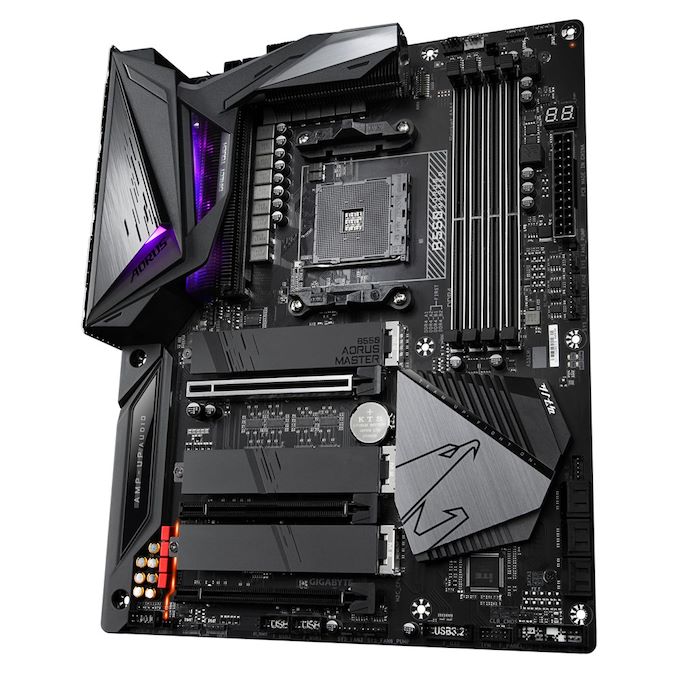
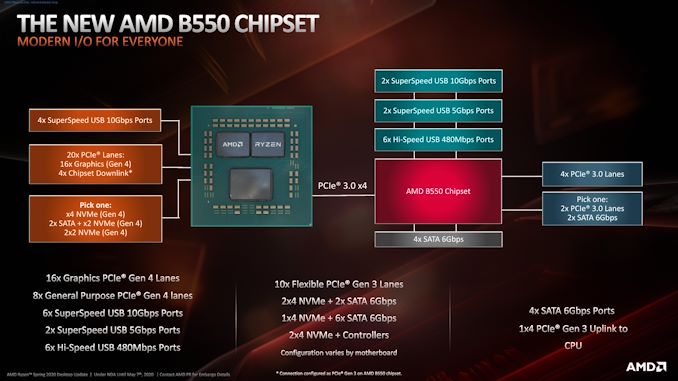
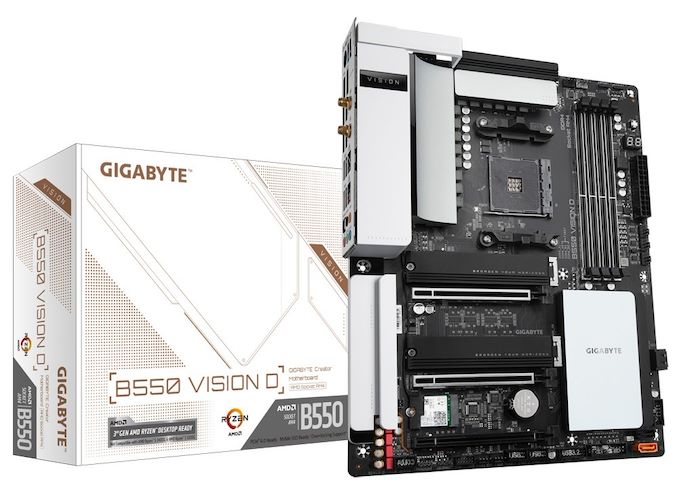
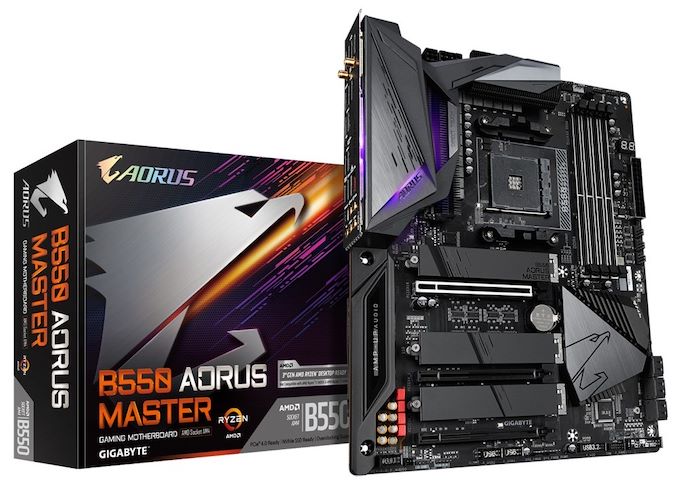

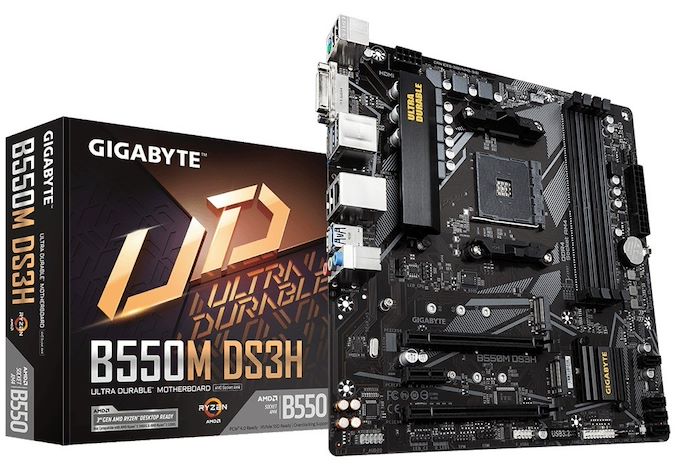








101 Comments
View All Comments
althaz - Wednesday, June 17, 2020 - link
Hmm, these seem mostly...pointless? More expensive than B450 by a lot, barely cheaper than the superior X570 boards (which have more PCIe lanes, more USB ports, etc)...these really need to be $50 cheaper across the (mother)board to make sense, IMO.sing_electric - Thursday, June 18, 2020 - link
It is interesting comparing similar X570 and B550 models within the same brand (or subbrand like Asus ROG or Gigabyte Aorus). It really seems like pricing is VERY close between them.Of course, if the VRMs are comparable, then for 90%+ of users, a X570 and a B550 are basically equivalent. In some cases it's almost like you're giving the user a choice between a newer B550 board with WiFi 6 and an older X570 board with AX but more USB ports or something, for within a few bucks of the same price (if you can find them at MSRP and in stock, which really has been an issue of late.)
jrbales@outlook.com - Wednesday, June 17, 2020 - link
I was looking at the boards on morning of Jun 16th. Very few B550 boards in stock (not too unusual so soon to release) and prices were high, in the range there just a few months ago I could have bought an X570 board. However, X570s were mostly out of stock everywhere I looked, and those in stick were generally pushing $300 USD or more. I suspect either manufacturing has not completely ramped up after COVID-19 in Asia, or that there is still a shipping back-load via ocean freight bearing ships between Asia and North America. Maybe if we ever see a return to a semblance.nce of normal, prices might lower and parts return to stock,
romrunning - Wednesday, June 17, 2020 - link
Shipping is main culprit here - big problem, including extra time spent in customs at ports (like LA in the US).sing_electric - Thursday, June 18, 2020 - link
Right - In February I picked up an X570 board for ~$30 under MSRP, so equivalent B550 board (same OEM, same 'line') would actually be a few bucks more... but adds a Thunderbolt header, WiFi 6 and 2.5 gig Ethernet (in exchange for PCIe lanes/slots and USB ports, and a 2nd m.2 connector). In the end, I think the X570 was a perfectly good choice on sale.willis936 - Wednesday, June 17, 2020 - link
I love that summary table. I wish it had an entry for “8 or more USB-A ports”. I actively use 15 on my desktop. The fewer PCIe cards and hubs needed, the better imo.GNUminex_l_cowsay - Wednesday, June 17, 2020 - link
Thanks for giving detailed and, hopefully, correct information about the PCIe configurations on these boards. Unfortunately many of the motherboard manufacturers don't give that information, make the information hard to find, give wrong information, or some combination of the above with regards to PCIe configuration.Out of curiosity, what happens when you put a pcie 3.0 x4 ssd in an x2 slot when the ssd's maximum read and write rates don't fully saturate x4? Is it just limited to the ~2GB/s bandwidth of the slot or does the ssd do something worse?
Lucky Stripes 99 - Wednesday, June 17, 2020 - link
Yeah, it will transfer just a bit under 2 GB/s due to overhead. I had this same issue with my H97 board and my Samsung 970, so I opted to purchase a cheap M.2 PCIe 3.0x4 card. HD Tune showed an improvement, but not by much to notice much real world difference.Allan_Hundeboll - Wednesday, June 17, 2020 - link
What about the Gigabyte 550M s2h?It's 12$ cheaper than the ds3h, so I would like to know what gigabyte did to lower the cost.
xenol - Thursday, June 18, 2020 - link
A complaint I had in previous AMD boards was how prevalent VGA ports were. I'm glad to see they're not so prevalent this time around.